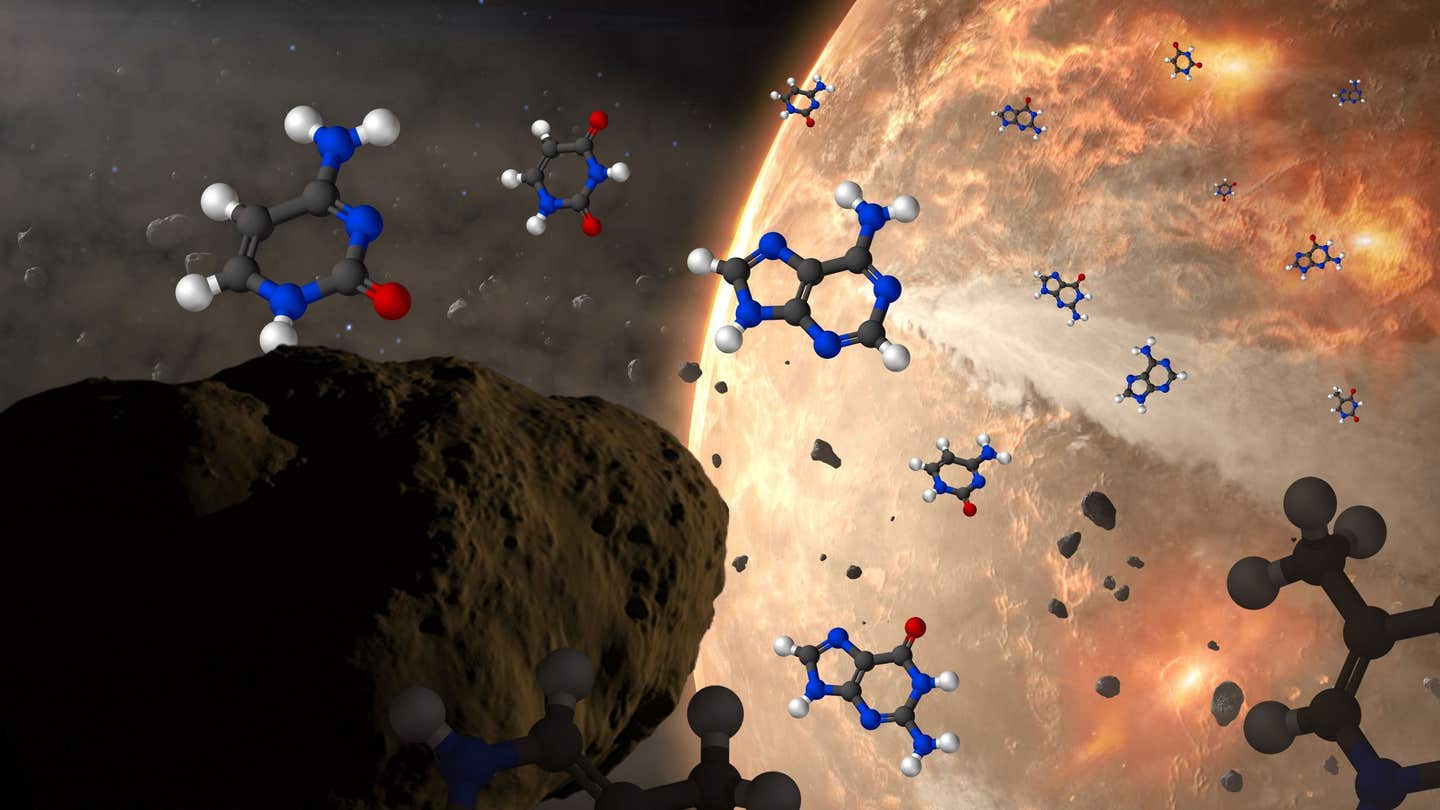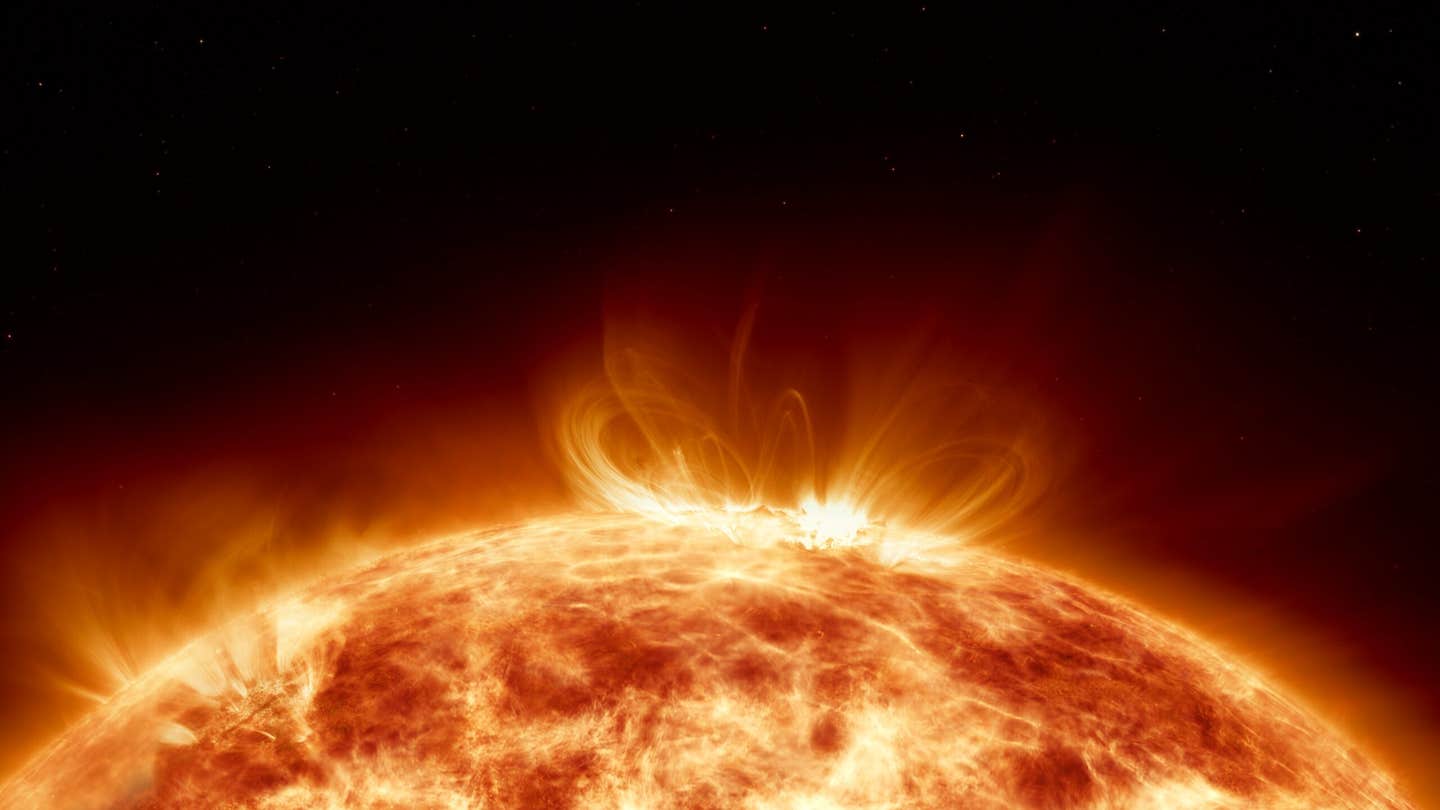Scientists discover a previously unknown molecule in space
Methoxy molecules are abundant in space, such as dimethyl ether, methoxymethanol, ethyl methyl ether, and methyl formate

Methoxy molecules are abundant in space, such as dimethyl ether, methoxymethanol, ethyl methyl ether, and methyl formate. (CREDIT: Creative Commons)
New findings from MIT's Professor Brett McGuire's team have unveiled a novel molecule lurking in the vast expanse of space. Their paper, titled "Rotational Spectrum and First Interstellar Detection of 2-Methoxyethanol Using ALMA Observations of NGC 6334I," made its mark in The Astrophysical Journal Letters.
Zachary T.P. Fried, a graduate student in McGuire's team and the lead author of the study, embarked on a journey spanning the globe—from MIT to France, Florida, Virginia, and Copenhagen—to piece together this groundbreaking discovery.
"Our group delves into unraveling the molecular makeup of regions where stars and solar systems are in the making," explained Fried. "This helps us chart the course of chemical evolution alongside the formation of stars and planets."
The structures and relative zero-point-corrected energies (in kJ mol−1 and kT-equivalent temperature) of the four most stable conformers of 2-methoxyethanol. See text for computational details. (CREDIT: The Astrophysical Journal Letters)
"We achieve this by scrutinizing the rotational spectra of molecules, which emit unique patterns of light as they tumble through space. These patterns act as fingerprints for molecules. To spot new molecules in space, we first identify the molecule we're after, then record its spectrum in our labs here on Earth, and finally, we hunt for that spectrum in space using telescopes," Fried continued.
In their quest for molecules in space, the McGuire Group has recently turned to machine learning to pinpoint promising candidates. In 2023, one of their machine learning models suggested focusing on a molecule dubbed 2-methoxyethanol.
"Methoxy molecules are abundant in space, such as dimethyl ether, methoxymethanol, ethyl methyl ether, and methyl formate, but 2-methoxyethanol would be the largest and most complex ever observed," Fried notes.
Related Stories
To detect this molecule through radio telescope observations, the team needed to analyze its rotational spectrum on Earth.
They pooled experiments from the University of Lille (France), the New College of Florida (Florida), and MIT to measure this spectrum across a wide frequency range, from microwaves to sub-millimeter waves (approximately 8 to 500 gigahertz).
Armed with data from these measurements, the researchers set out to search for the molecule using the Atacama Large Millimeter/submillimeter Array (ALMA) towards two star-forming regions: NGC 6334I and IRAS 16293-2422B. Collaborating with researchers at the National Radio Astronomy Observatory (Virginia) and the University of Copenhagen (Denmark), members of the McGuire group scrutinized these telescope observations.
Frequency window showing the most prominent 2-methoxyethanol transitions (magenta) in our data toward NGC 6334I. (CREDIT: The Astrophysical Journal Letters)
"In the end, we identified 25 rotational lines of 2-methoxyethanol that precisely matched the molecular signal observed towards NGC 6334I (the barcode aligned!), confirming the presence of 2-methoxyethanol in this source," Fried confirms. "This enabled us to determine physical properties of the molecule towards NGC 6334I, such as its abundance and excitation temperature. It also facilitated an exploration of potential chemical pathways from known interstellar precursors."
Such molecular revelations bolster researchers' understanding of molecular complexity during the stellar birth process. 2-methoxyethanol, comprising 13 atoms, stands out for its size—by 2021, only six species larger than 13 atoms had been detected beyond the solar system, many by McGuire's team, all existing as ringed structures.
"Continued scrutiny of large molecules and subsequent derivation of their abundances propels our comprehension of the efficiency with which large molecules can form and the specific reactions that may produce them," Fried asserts. "Moreover, detecting this molecule in NGC 6334I but not in IRAS 16293-2422B provides a unique opportunity to delve into how the differing physical conditions of these two sources influence the chemistry at play."
What is 2-methoxyethanol?
2-methoxyethanol, also known as methyl cellosolve, is a chemical compound with the formula CH3OCH2CH2OH. It is a clear, colorless liquid with a mild, pleasant odor. It is commonly used as a solvent in various industrial applications, including paints, coatings, inks, and cleaning products.
Additionally, it finds use as a stabilizer in hydraulic fluids and as a chemical intermediate in the production of other compounds. However, it's important to handle 2-methoxyethanol with caution as it can be harmful if ingested or inhaled and can cause irritation to the skin and eyes.
For more science and technology stories check out our New Innovations section at The Brighter Side of News.
Note: Materials provided above by the The Brighter Side of News. Content may be edited for style and length.
Like these kind of feel good stories? Get the Brighter Side of News' newsletter.



